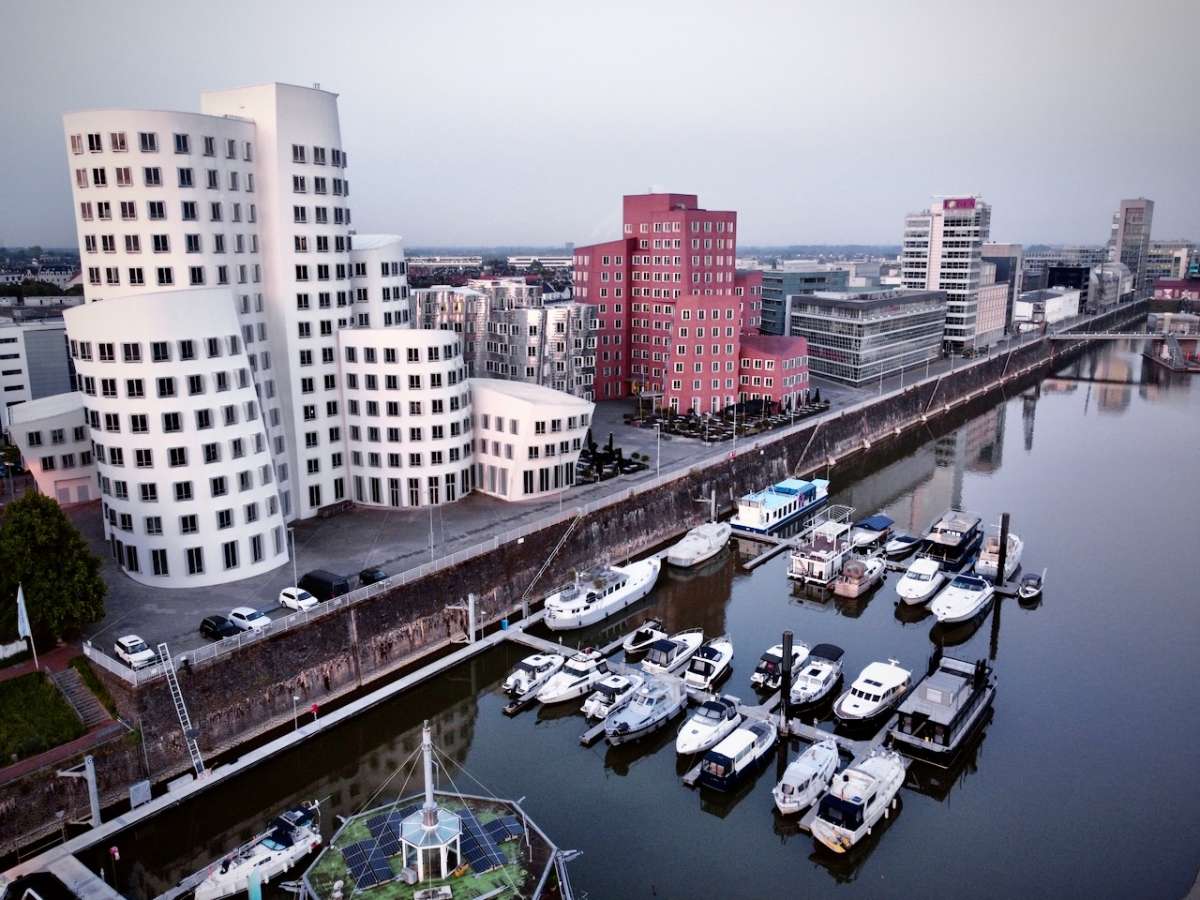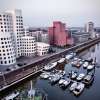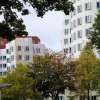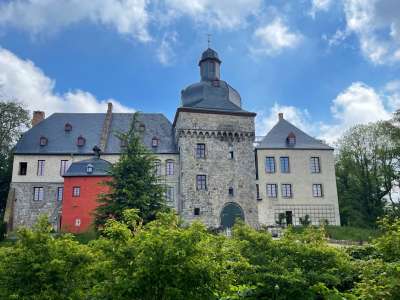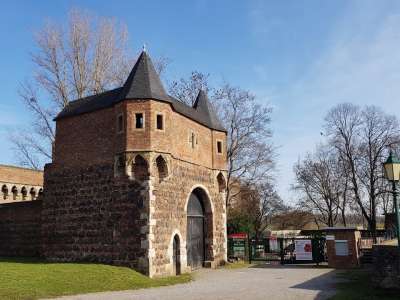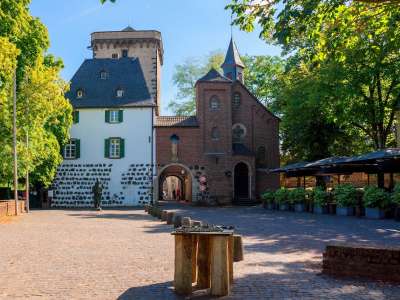The Neuer Zollhof is an iconic architectural landmark located in Düsseldorf’s Media Harbor (MedienHafen) district, a vibrant area known for its blend of modern design and industrial heritage. Completed in 1999, Neuer Zollhof is a striking complex of three distinct buildings designed by the renowned American architect Frank Gehry. The development quickly became a symbol of Düsseldorf’s transformation into a hub for contemporary architecture and creative industries.
Gehry’s design for Neuer Zollhof is characterized by its bold, unconventional forms that challenge traditional architectural norms. Each of the three buildings features a unique façade and structure, creating a dynamic visual contrast. The first building is clad in white plaster, the second in stainless steel, and the third in red brick. The stainless steel building, with its reflective surface, is particularly eye-catching as it mirrors the surrounding buildings and the changing skies, giving the complex a fluid, almost sculptural quality.
The buildings are designed with irregular, curved lines that seem to defy gravity, creating a sense of movement and energy. This fluidity is a hallmark of Gehry’s architectural style, which often blurs the boundaries between art and architecture. The playful, almost whimsical appearance of Neuer Zollhof contrasts sharply with the more traditional structures in the surrounding area, making it a focal point for visitors and architecture enthusiasts.
Neuer Zollhof is more than just an architectural marvel; it is also a thriving business and cultural center. The buildings house offices, studios, and businesses from various industries, particularly media, design, and technology. This makes it a dynamic environment where creativity and innovation flourish. The surrounding Media Harbor area has also become one of Düsseldorf’s most popular districts, with a mix of restaurants, bars, and cultural venues that attract both locals and tourists.
Overall, Neuer Zollhof stands as a testament to Düsseldorf’s embrace of modernity and innovation. Its distinctive design and the creative energy of the area have made it one of the most photographed and visited sites in the city, symbolizing the blend of tradition and progress that defines Düsseldorf’s urban landscape.
